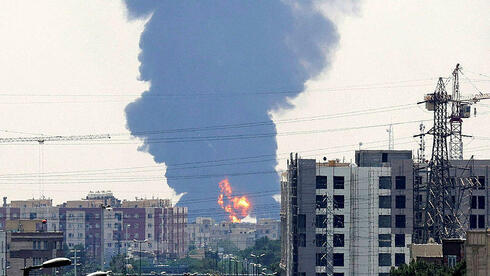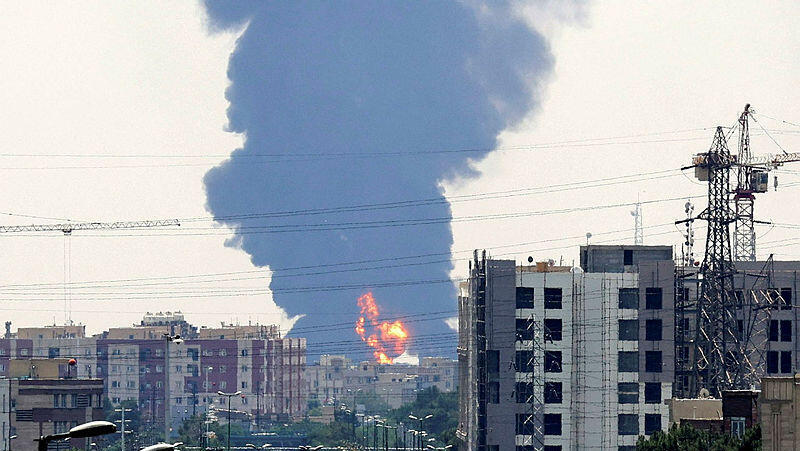
Iran struggles to maintain routine as Israeli strikes intensify
From remote work to bazaar evacuations, Iran's facade of normalcy crumbles.
Since the Israeli attack began, the Iranian regime has attempted to project a “business as usual” atmosphere and maintain a sense of civilian routine. However, as the days passed and Israeli strikes escalated, culminating in major assaults on Tehran over the past couple of days, that facade has begun to erode. Residents are now confronting a new and unsettling reality.
Government, Labor, and Education Institutions
Remote Work and Limited Disruptions in Key Regions
Most government offices and businesses across Iran continue to operate, albeit with adjustments. In Tehran and nearby provinces, public sector employees, particularly women, have been instructed to work remotely for several days. In Tehran Province, civil servants have been told to work from home until Wednesday, while the adjacent Alborz Province has implemented a similar policy through at least Monday. Essential services such as banks, healthcare institutions, and security forces continue to function as usual and are reportedly fully staffed.
In other regions, local governments operate almost normally. For example, the governor of Hamadan Province in the west affirmed that all government offices and workplaces are open and employees must report as usual.
In contrast, in areas directly impacted by the attacks, precautionary measures are in place. In East Azerbaijan Province (around the city of Tabriz), where an airstrike occurred Saturday, universities postponed all final exams by several weeks. At the University of Isfahan, the administration opted for a milder approach, delaying remaining exams by one week and moving them online via the university’s distance-learning platform. Most schools had completed final exams before the conflict began and remain open, with occasional warnings issued in vulnerable areas.
Transportation and Airspace
Flights Grounded as Trains Take Over
Iran’s civil aviation sector is almost completely shut down. Early in the conflict, Iran’s airspace was closed to civilian flights. As of the latest update, the closure will remain in effect at least until Sunday afternoon, with resumption pending official confirmation.
Tehran’s main international airport, Imam Khomeini, is fully shut down, and passengers have been advised to stay away. Mehrabad Airport, which serves domestic routes, suffered damage to Terminal 4 during a Saturday night attack, although runways and key operational systems remain intact.
With air travel halted, demand for land transport has surged. Iran’s national railway network remains fully operational and has actually increased capacity. The National Railway Company reported no cancellations or delays and added extra carriages and new services, particularly on the Tehran–Mashhad and Tehran–Tabriz routes. Intercity bus lines are also running normally. The Public Bus Companies Association issued a statement assuring continued service despite the situation.
Fuel and Energy Sectors
Mounting Tensions and First Signs of Shortages
Until Sunday, Iran’s domestic trade appeared largely unaffected. Shops, markets, and restaurants in major cities remained open after authorities clarified there was no mandate to close. The same applied to provincial areas. Traditional bazaars showed lighter-than-usual foot traffic due to safety concerns and advisories against crowding.
But on Sunday afternoon, circumstances began to shift. Following Israeli warnings of further strikes on Tehran, videos circulated showing evacuations at the city’s central bazaar, long considered the economic heart of the capital.
The energy sector is now feeling the strain. Following Israeli strikes on two fuel depots near Tehran on Saturday, emergency crews extinguished the fires and resumed operations, according to the National Iranian Oil Products Distribution Company. Still, public skepticism remains high. Long lines formed at gas stations Sunday afternoon, and videos quickly spread online. Authorities claim there is no fuel shortage and that water and electricity grids are stable, though brief power outages have been reported in some neighborhoods.
Macroeconomic and Financial Implications
Currency Plunges, Stock Market Closes
The economic toll of the conflict is already visible. The Iranian rial has plunged in value. In the free (black) market, the U.S. dollar rose by 14%, reaching 955,000 rials. Gold prices are also surging: the cost of an ounce of 18-karat gold has risen roughly 7% since the conflict began. A public rush toward gold and foreign currency is underway, with queues forming at money changers in Tehran and Mashhad, despite Central Bank efforts to inject dollars into the market.
The Tehran Stock Exchange, which was scheduled to open Sunday, remained closed. Market insiders estimate that had it opened, sharp declines would likely have occurred. In response to the mounting crisis, the Iranian government has formed an emergency economic committee to issue daily policy updates aimed at stabilizing financial markets.














